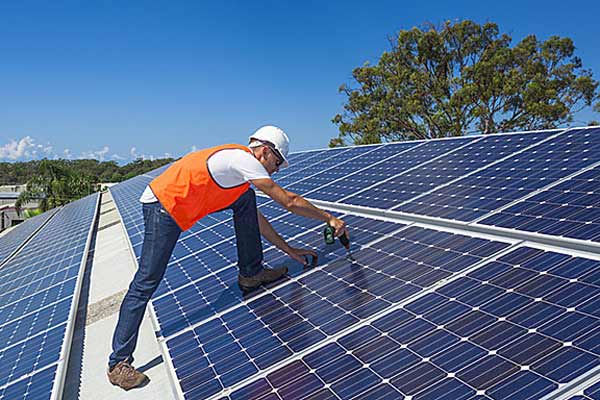Reflecting on 2017 so Far
2017 has been an interesting year so far for the solar industry, but then again, when is it not? According to the latest Solar Market Insight report, residential solar build slowed ever-so-slightly in 2017 compared to Q1 2016 numbers; 2,044MW were installed in Q1 of this year, a 2 percent decline year-over-year from 2016 levels.
While 2 percent is small overall for an industry that has had an average annual growth rate of 68 percent over the last 10 years (and you can’t sustain those growth numbers forever), what is notable is that the residential market fell 17 percent over Q1 2016 numbers, and 2016 was already a slower year for residential growth than 2015, growing by 19 percent compared to 2015’s records setting 66 percent.
What gives? Is the residential market down for the count? Industry press would have you thinking so, but we think it will come back around. Here’s why.
Residential Growth
The solar industry, like many other industries, goes through cycles of growth. Back in 2014, all eyes, were on the residential market.8 SolarCity’s stock was through the roof, trading above $80, and even SunEdison was interested in residential. In 2015, it tried to acquire Vivint (though that didn’t turn out so well. We even saw residential outpacing the C&I sector in 2014, when 1,231MW were installed compared to 1,036MW in the C&I space according to GTM’s Solar Market Insight report’s annual state data.
In 2015, residential experienced the largest annual growth rate yet and outpaced C&I again with 2,099MW of residential compared to non-residential’s 1,011MW. This marked the fourth consecutive year of greater than 50 percent annual growth, marking a three-fold increase in the residential solar market from four years prior. Even in 2016, which saw a lull in year-over-year growth, residential outpaced non-residential with 2,583MW compared to 1,586MW.
This growth is particularly remarkable considering the average size of a residential system in the U.S. is 5kW, so 200 systems need to be sold for every C&I developer’s one 1MW project.
Policy Changes Drive Uncertainty
The notion that the residential sector would maintain a greater than 50 percent annual growth rate forever is impossible, if not unsustainable. It would be foolish to think otherwise. Look at the example of the cellphone, which is the most quickly adopted consumer technology in history. From 2004 to 2013, ownership grew from 65 percent to 91 percent in the United States. Solar has a long way to go before it hits market penetration like the cell phone.
Additionally, past a growth rate like that being unsustainable, the threat of the investment tax credit (ITC) expiration at the end of 2015, caused residential companies to rush and sell systems that would qualify for the 30 percent credit. This inflated build rates.
In 2016, after the ITC extension, we began to see a lull as the threat of losing out on the tax credit became less imminent.
However, it’s not only the post-ITC extension lull, that has slowed the residential market. Regulatory and policy changes in key state markets contributed by creating uncertainty. For example, California restructured its net metering under NEM 2.0, Nevada had its own highly publicized debacle, SREC prices started to fall in Maryland, and Massachusetts began transitioning away from its SREC II program to the new SMART program.
These factors have driven uncertainty in key markets, and contributed to slower residential growth year over year.
Aside from policy changes, like any new technology, solar will be subject to what sociologist Everett Rogers refers to as the diffusion of innovations curve. Under Rogers’ theory, adoption is led by innovators, then followed by the early adopters, and then the early and late majorities which tend to be the drivers of massive growth followed by a leveled-off growth pattern of laggards.
We have seen this pattern in California – which fell 30 percent year-over-year according to GTM. The state’s residential market has gone through these stages and has begun to start leveling off…for now.
Outlook
Nonetheless, we’re optimistic about the future of solar in emerging markets such as Illinois, which is required to install at least 338MW of residential solar (<10kW) by 2030 under the recently enacted Future Energy Jobs Act (not to mention the potential 1.08GW of utixlity-scale, 1.01GW of C&I, and 270 of discretionary and brownfield MW, totaling around 2.7GW overall that will be needed by 2030 to meet the requirements).
Mature residential markets such as New Jersey have remained strong, while new state markets began to emerge in Utah, Texas, and South Carolina.
As these new markets emerge, we feel optimistic about the national outlook of the residential market despite current net metering battles in higher penetration states (and even not-so-high penetration states). In fact, even if the Suniva trade petition is taken up, residential market may be the market sector hit the least, while utility-scale, which has been the “hot” market sector fueled by post-ITC-extension project spillover, may be affected the most. Indeed, the tables may turn again.
Conclusion
As always, don’t believe the hype. We’ve seen a slowdown in key markets such as California, and debate over rate design does create uncertainty and affect growth, but hat does not mean the sky is falling. The solar industry and the various market sectors – residential, commercial, and utility-scale – are subject to cycles of growth.
However, the solar industry as a whole has continued to grow each year at an unprecedented rate, and even with this year’s slowdown, total U.S. installed PV capacity is expected to triple over the next five years.
It’s also worth noting that solar ranked second in installed electric generating capacity in the U.S. during Q1 at 30 percent, behind only natural gas which at 41%. The pending trade case would certainly slow this growth, but if unsuccessful, the solar industry will continue its trajectory.













Comments